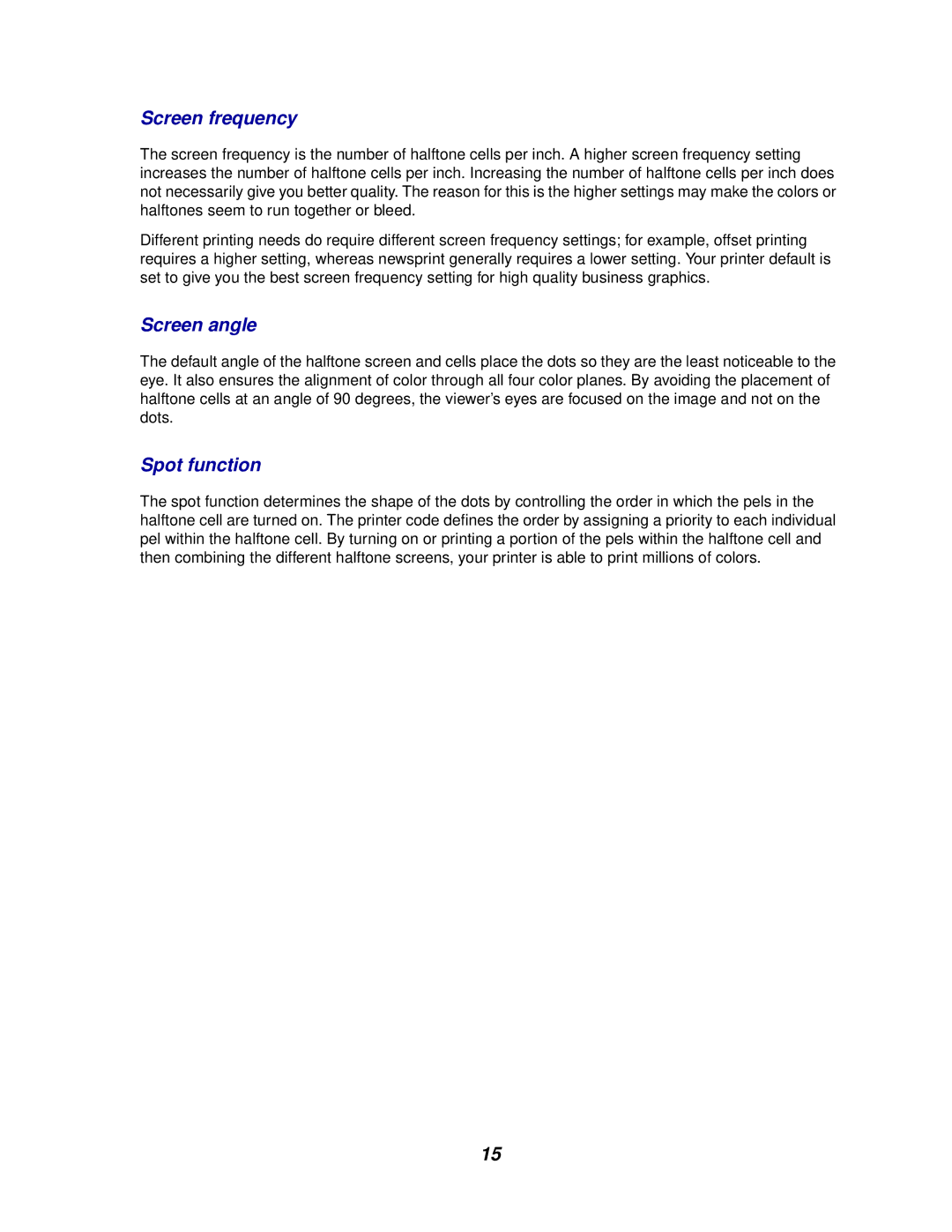Screen frequency
The screen frequency is the number of halftone cells per inch. A higher screen frequency setting increases the number of halftone cells per inch. Increasing the number of halftone cells per inch does not necessarily give you better quality. The reason for this is the higher settings may make the colors or halftones seem to run together or bleed.
Different printing needs do require different screen frequency settings; for example, offset printing requires a higher setting, whereas newsprint generally requires a lower setting. Your printer default is set to give you the best screen frequency setting for high quality business graphics.
Screen angle
The default angle of the halftone screen and cells place the dots so they are the least noticeable to the eye. It also ensures the alignment of color through all four color planes. By avoiding the placement of halftone cells at an angle of 90 degrees, the viewer’s eyes are focused on the image and not on the dots.
Spot function
The spot function determines the shape of the dots by controlling the order in which the pels in the halftone cell are turned on. The printer code defines the order by assigning a priority to each individual pel within the halftone cell. By turning on or printing a portion of the pels within the halftone cell and then combining the different halftone screens, your printer is able to print millions of colors.
15
